
Antineoplastic Agents
Lecture 5
1
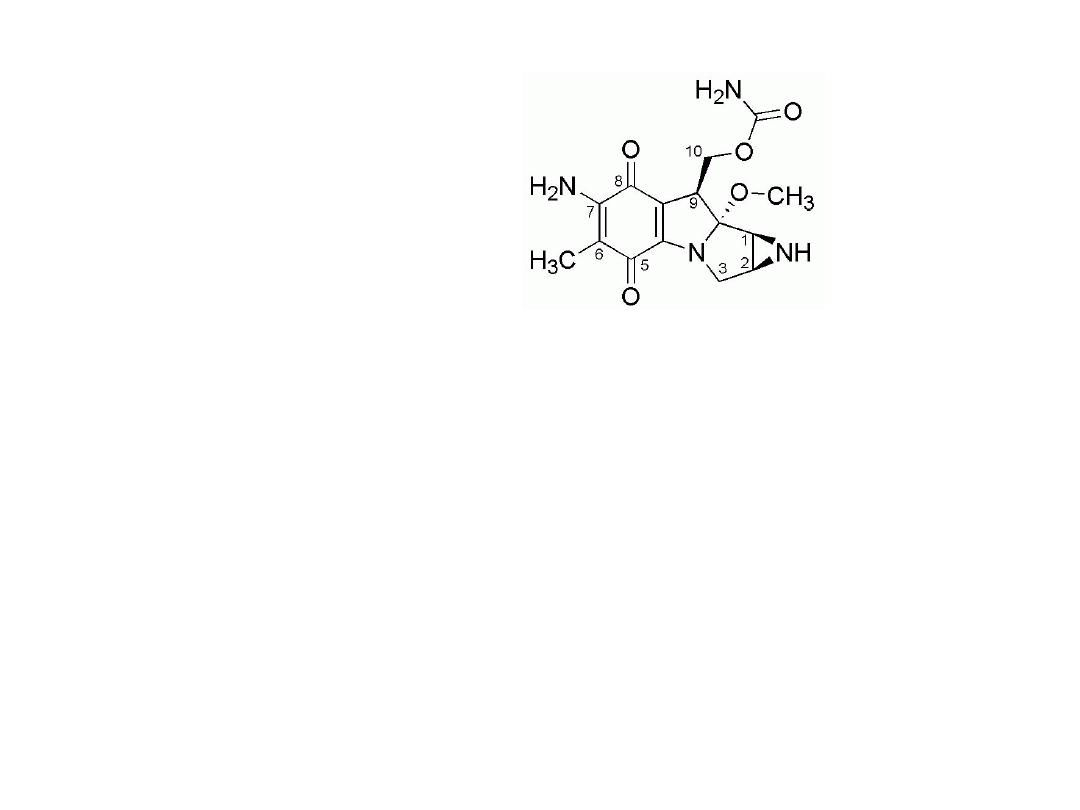
MITOMYCIN C
Mitomycin is sometimes
included as an alkylating
agent but is included
here because it is a
naturally occurring
material
The drug contains what would appear to be reactive
functionalities, including the
quinone
and
aziridine
functionalities, both which would be thought to be
susceptible to nucleophilic attack; however, the reactivity
of these functionalities is reduced because of steric and
electronic effects in the parent molecule.
2

Selective activation could be achieved in a reductive
environment such as that found in an area of low oxygen
content. This is known to occur in tumors where the fast
growing cells often grow beyond the blood supply that
would normally provide oxygen.
Mitomycin C is capable of being activated and alkylating
DNA in an anaerobic environment, but there is actually
little selectivity for hypoxic cells. Activation can occur
enzymatically by both one- and two-electron processes.
3
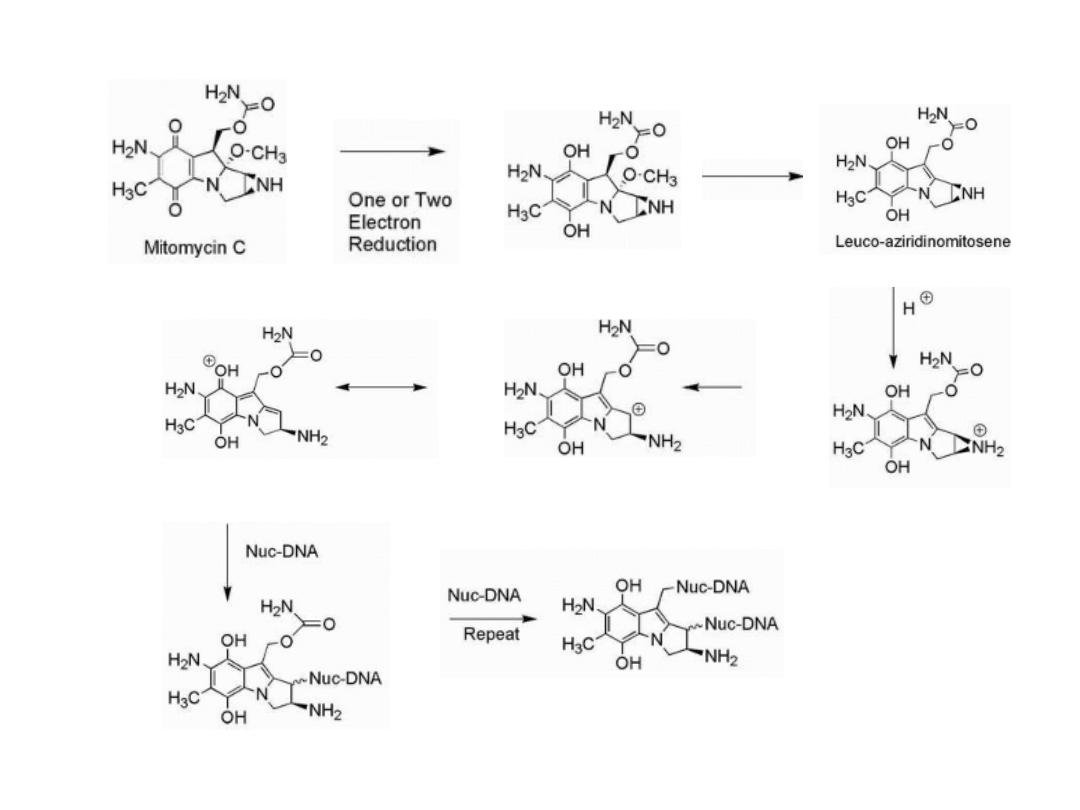
4

Vinca Alkaloids
Vincristine and vinblastine are natural products isolated from
Catharanthus roseus (periwinkle). The
alkaloids are composed
of a
catharanthine
moiety containing the
indole
subunit and
the
vindoline
moiety containing the
dihydroindole
subunit
joined by a carbon-carbon bond.
Vincristine and vinblastine differ only in the group attached to
the dihydroindole nitrogen, which is a methyl group in
vinblastine and a formyl group in vincristine.
Vinorelbine is semi-synthetic.
5
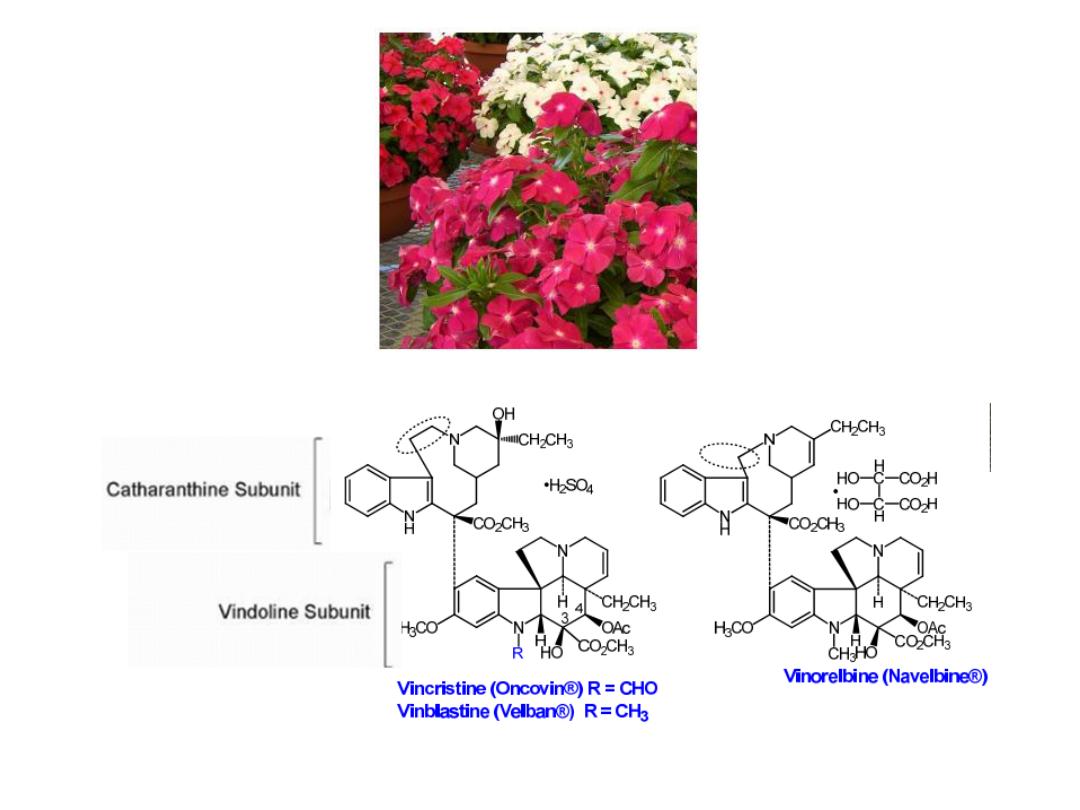
6

A
mitotic inhibitor
is a drug that inhibits mitosis, or
cell division. These drugs disrupt microtubules of
the spindle apparatus, which pull the cell apart
when it divides.
• The spindle apparatus is a subcellular
structure that segregates chromosomes between
daughter cells during cell division. The basic unit of
the
spindle
apparatus
are
microtubules.
Microtubule
polymerization
and
depolymerization
dynamics
drive
chromosome
assembly.
7

•
Microtubules
consist
of
isotypes
of
α-
and
β-tubulin
proteins.
During
cell
division, tubulin undergoes intense, sporadic, and
alternating periods of structural growth and erosion
known as
“dynamic instability.”
•
Inhibiting
the
essential
hyperdynamic
changes
in
microtubular
structure
results
in
mitotic
arrest
and
apoptosis.
8
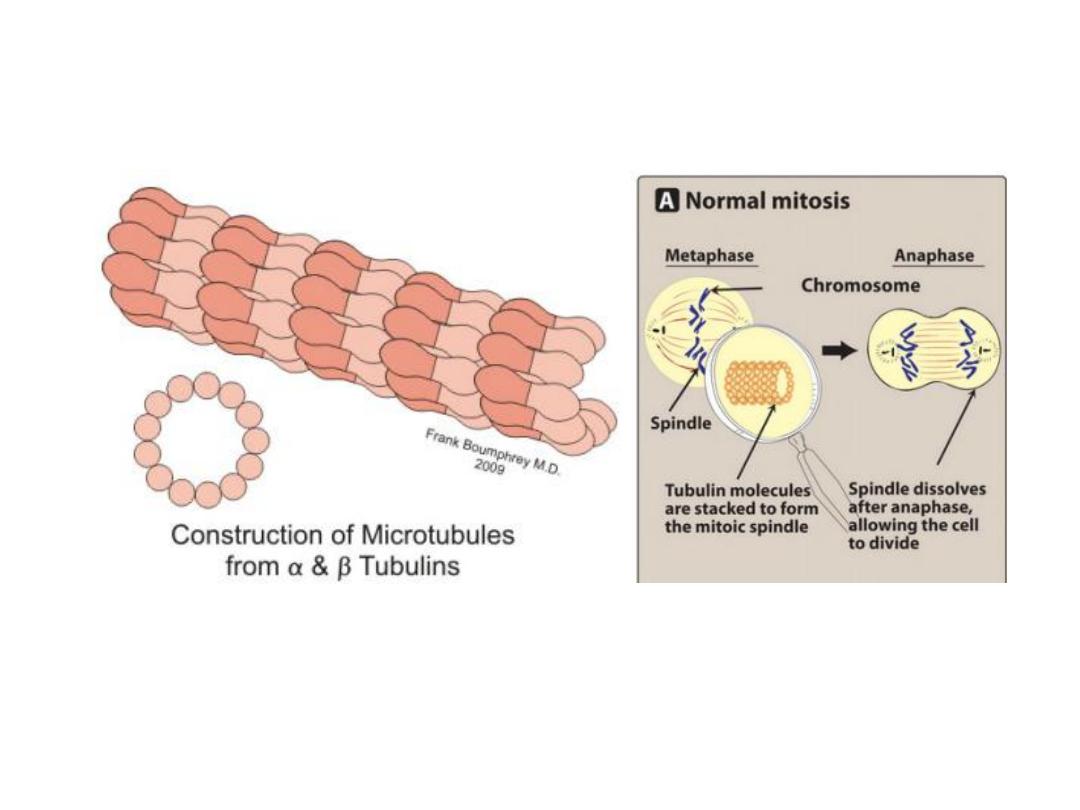
9
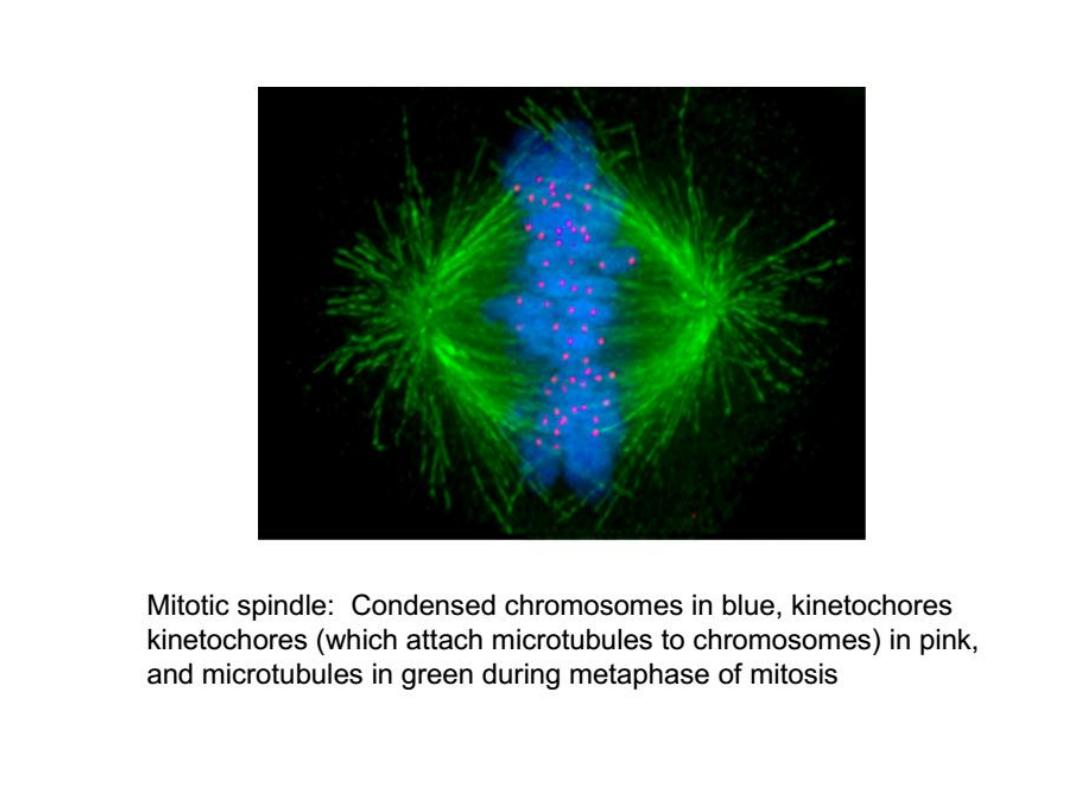
10
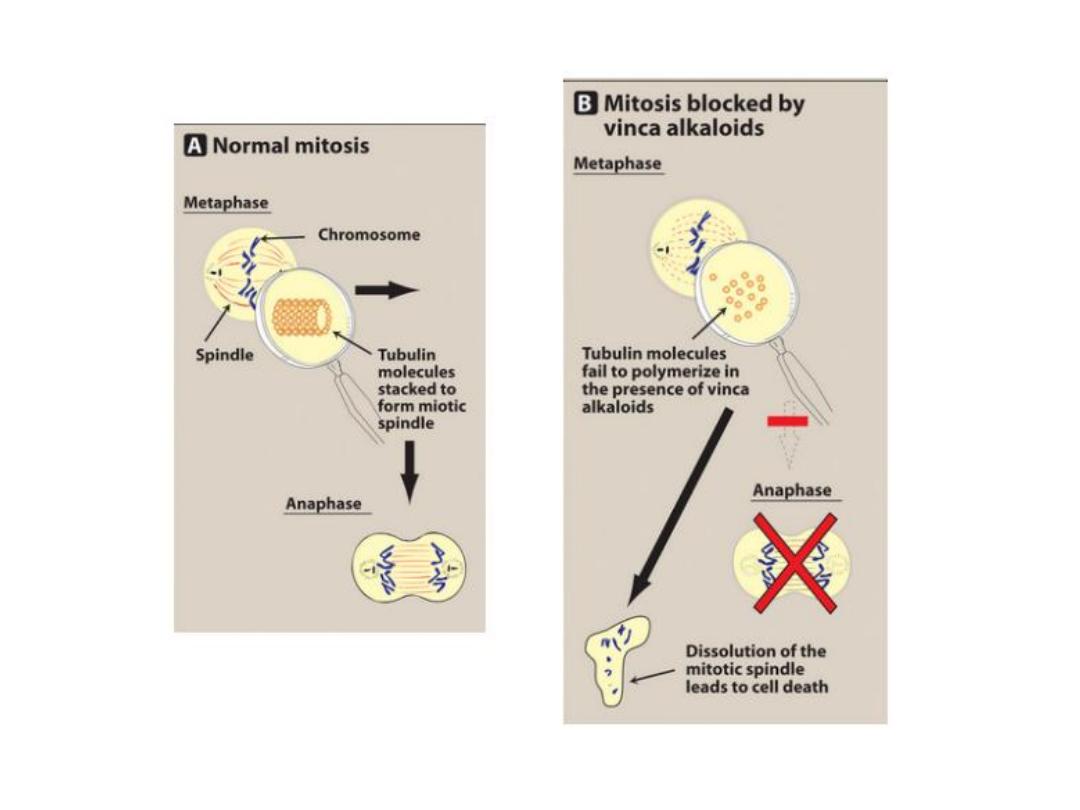
11

The vincas bind to tubulin in a reversible manner at
sites different from those at which other inhibitors of
spindle function bind including the podophyllotoxins
and the taxanes. Combinations of these agents may
give synergistic effects because of their unique binding
sites.
12

Taxanes: Paclitaxel ,Docetaxel
Taxanes bind to polymerized (elongated) β-tubulin
at a specific hydrophobic receptor site.
• Taxane-tubulin binding promotes a stable
tubulin
conformation
which
renders
the
microtubules resistant to depolymerization and
prone to polymerization. In turn, this interrupts
the
normal
process
of
cell
division.
13
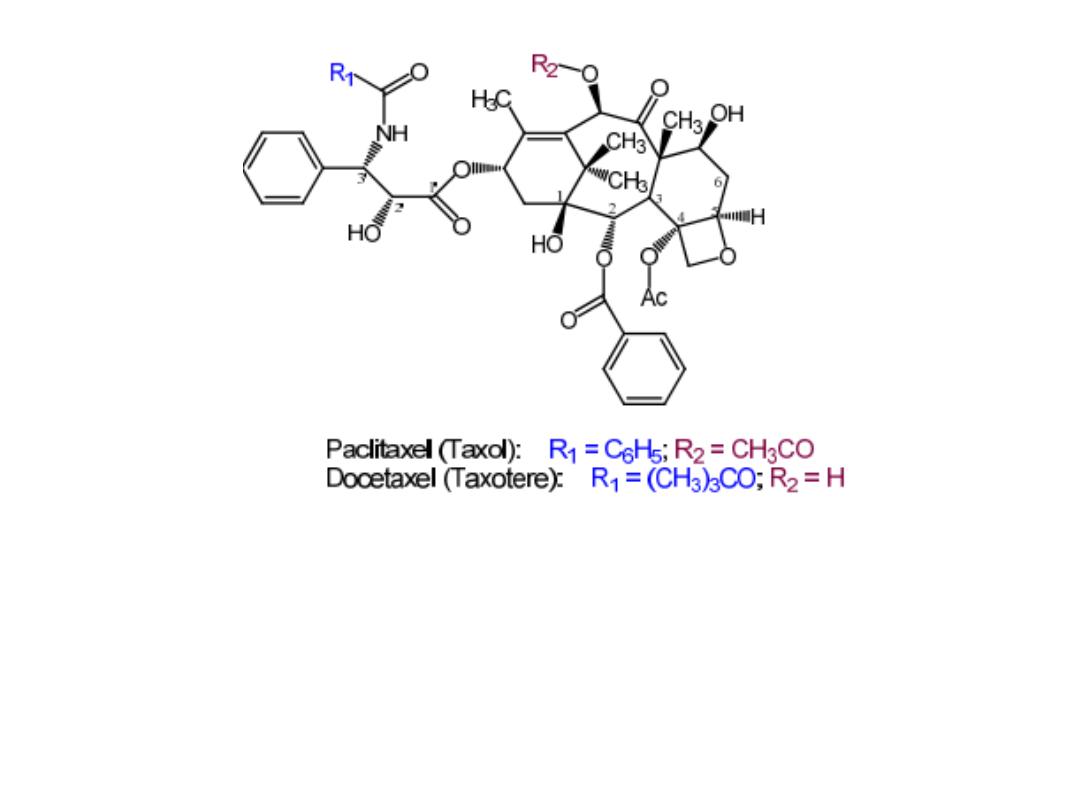
What is the effect of paclitaxel on microtubule
“dynamic instability”?
What is the physicochemical advantage of docetaxel
compared
to
paclitaxel?
14
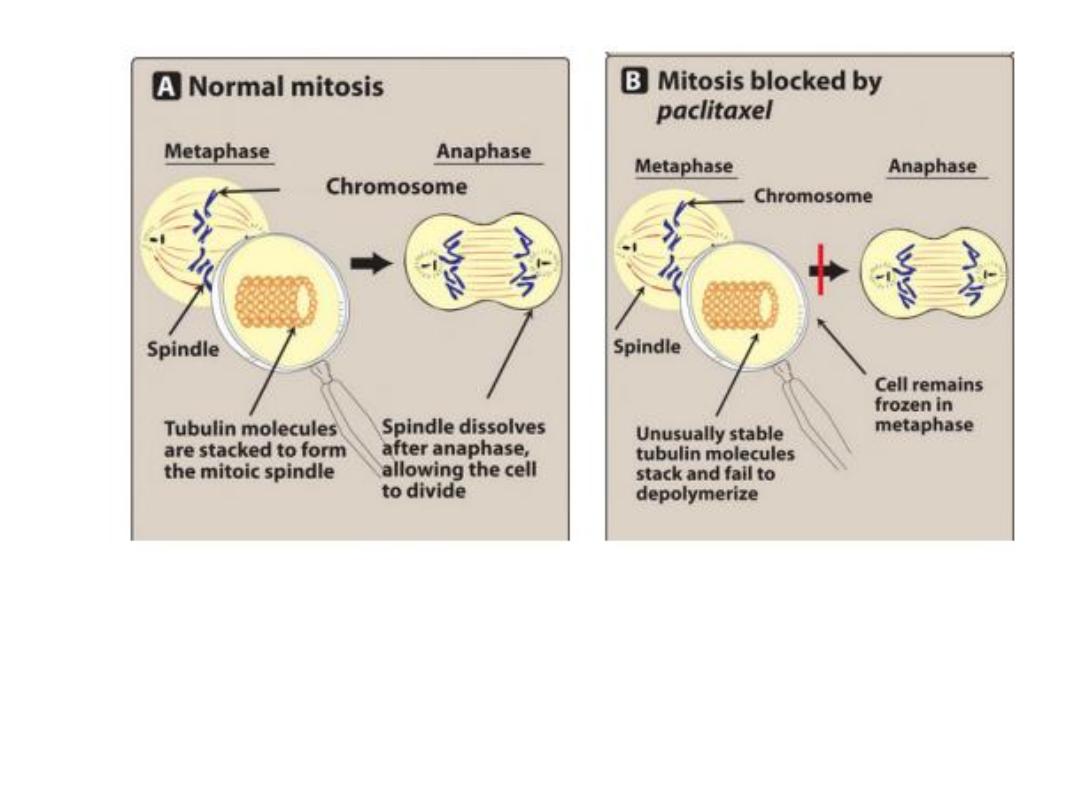
15

PROTEIN KINASE INHIBITORS
The growth and proliferation of many tissues was under the
control of the endocrine system, in which endocrine glands
secreted hormones and that hormones or their antagonists
were useful in controlling the overgrowth of these tissues.
It was found later that other growth factors, many of which
were secreted by nearby cells, were also involved in
controlling the growth and proliferation of the target tissue
and this became known as paracrine control.
The hormone interaction with these cell surface receptors
resulted in growth and proliferation of cells. There are
various mechanisms by which these processes occur, but a
generalized pathway involves interaction of a growth factor
with a growth factor receptor occurring as a monomer
present in the phospholipid bilayer of the cell membrane,
which results in dimerization of the receptors.
16

•
Tyrosine kinases (TKs)
are a subgroup of the
much
larger
class
of
protein
kinases.
They transfer a phosphate group from ATP to a
tyrosine residue in a protein.
• TKs regulate cell proliferation, differentiation,
and survival. Aberrations in the activity
of protein tyrosine kinases (TKs) are associated
with
several
forms
of
cancer.
•
Tyrosine
kinases
(TKs)
are
divided
into two classes,
receptor TKs
and
non-receptor
protein
TKs
.
17

Receptor tyrosine kinases (RTKs):
• RTKs are composed of
– an
extracellular domain
, which is able to bind a
specific ligand
– a
transmembrane domain
, and
– an
intracellular catalytic domain
, which is able to
bind and
phosphorylate
selected substrates.
18
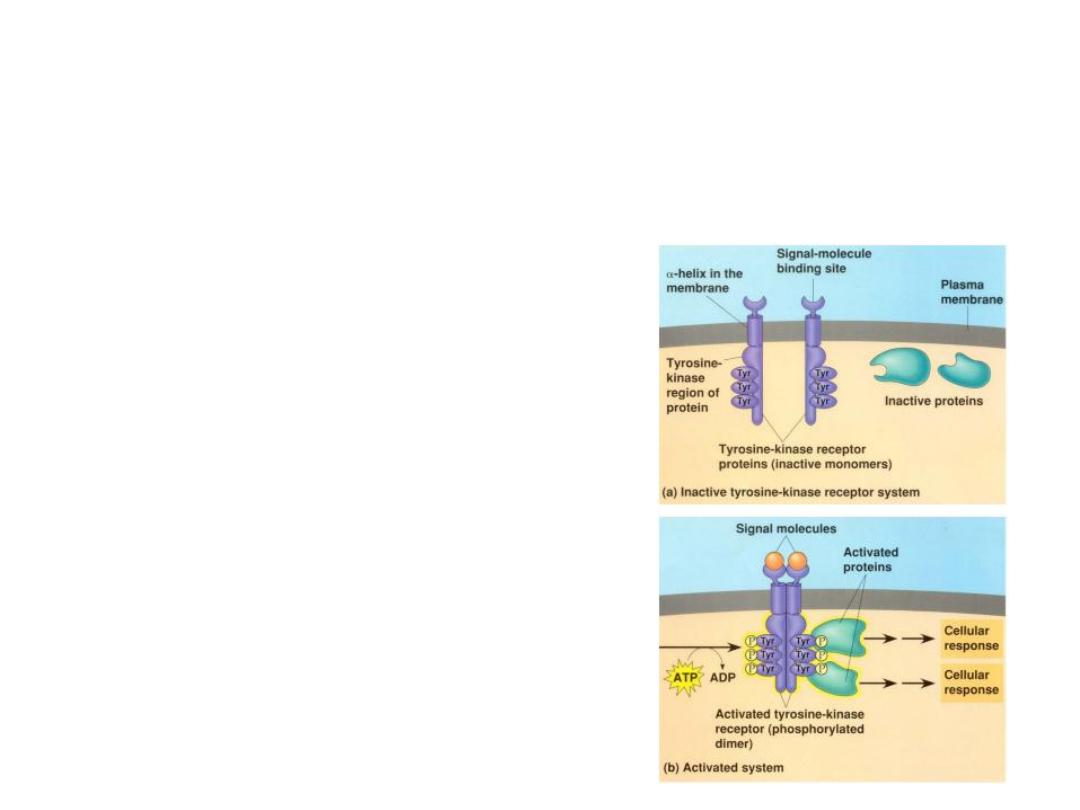
Binding of a ligand to the extracellular region
causes a series of
structural rearrangements
in
the RTK assembly that leads to its
enzymatic
activation
19
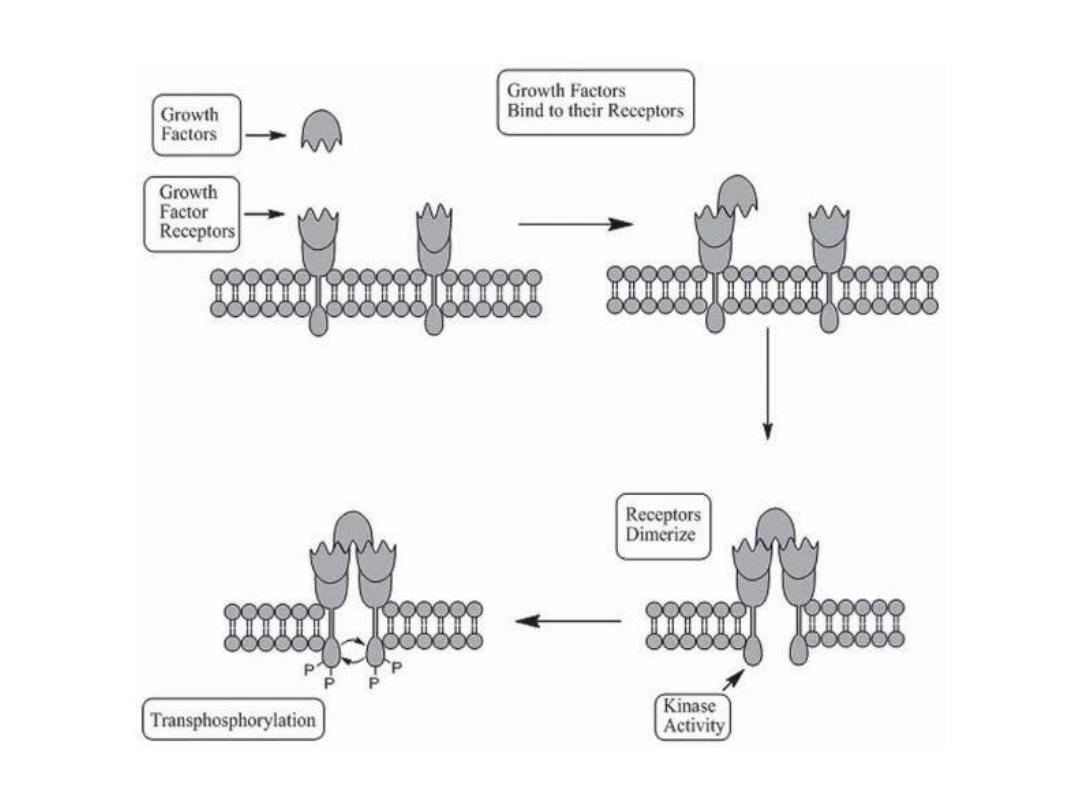
20

Examples of RTKs include epidermal growth factor
receptor
(EGFR),
vascular endothelial growth factor
receptor
(VEGFR),
human epidermal growth factor
receptor 2
(HER2)
, and platelet-derived growth
factor
receptor
(PDGFR).
21

Non-receptor tyrosine kinases (NRTKs):
NRTKs are cytoplasmic protein kinases.
Examples:
Bcr-Abl
TK inhibitors:
•
Type 1 TK inhibitors
bind to the active
conformation of the kinase.
•
Type 2 TK inhibitors
inhibit the enzyme in
its
inactive
conformation.
22
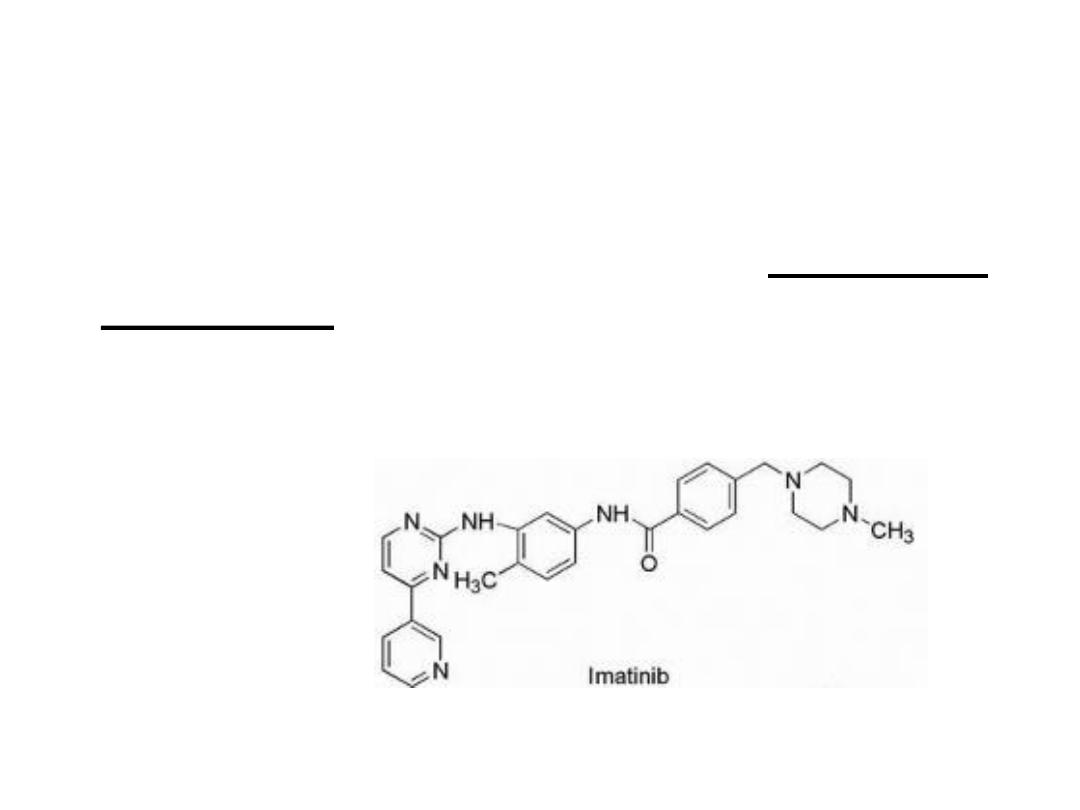
Imatinib
-
NRTK
inhibitor.
-
Type 2
Bcr-Abl kinase inhibitor.
It was developed to specifically inhibit this
unique TK and does so by binding to the
ATP-binding pocket and
stabilizing an
inactive
form
of
the
enzyme.
23
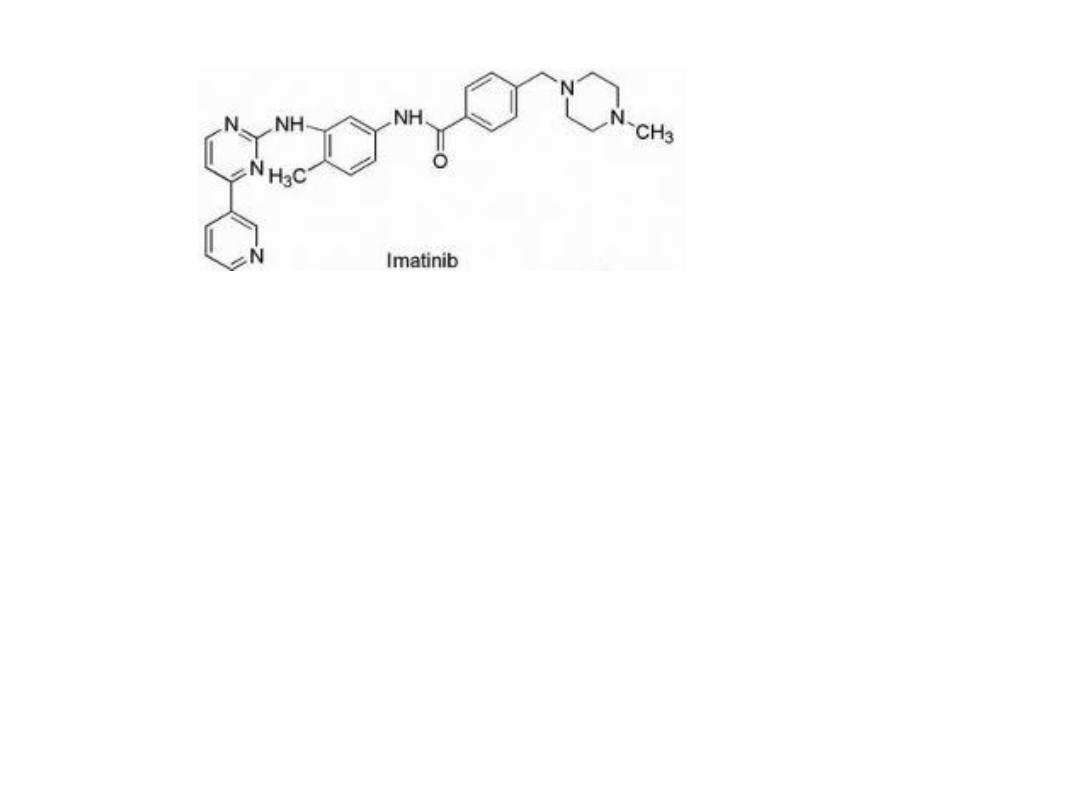
Specificity for the BCR-ABL kinase is not complete
because of structural similarity of TKs.
24
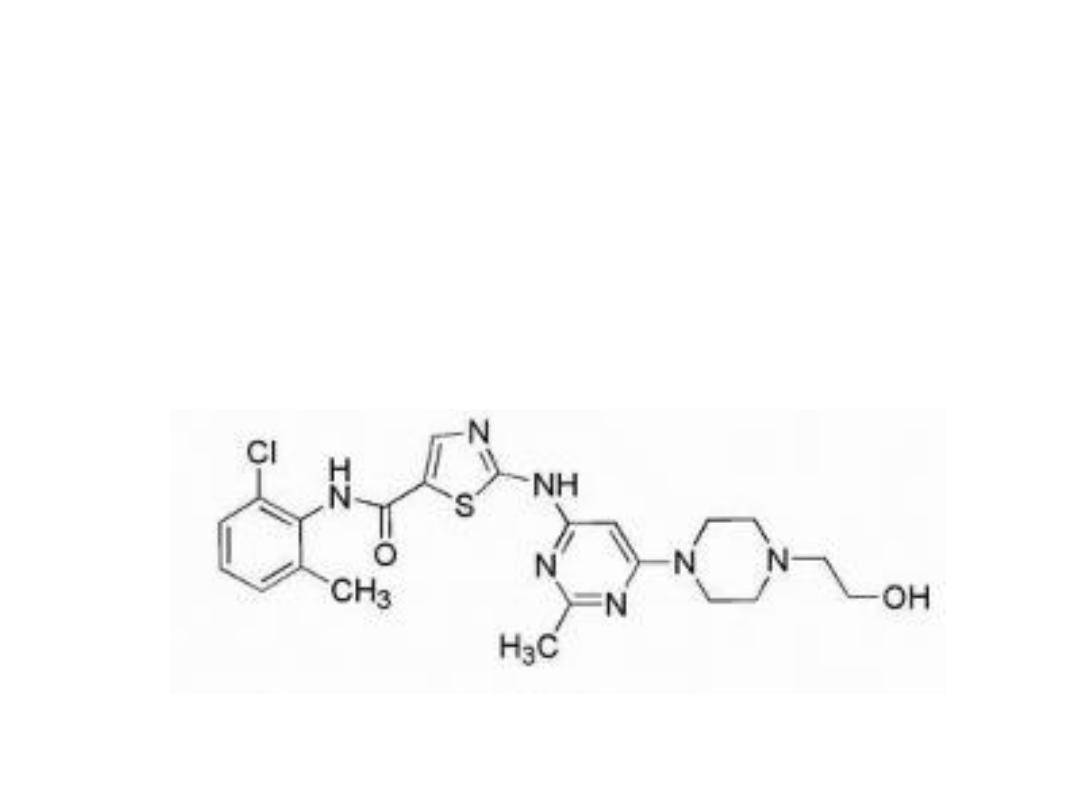
Dasatinib
-
NRTK
inhibitor.
- In contrast to imatinib, dasatinib is a mixed
type 1
and
type 2
Bcr-Abl kinase inhibitor.
25

• Can bind to either an
active
or
inactive
form
of the enzyme and is 100 times more potent
compared with imatinib. It has the ability to
overcome resistance associated with amino
acid alterations that leads to decreased
affinity for imatinib.
26
